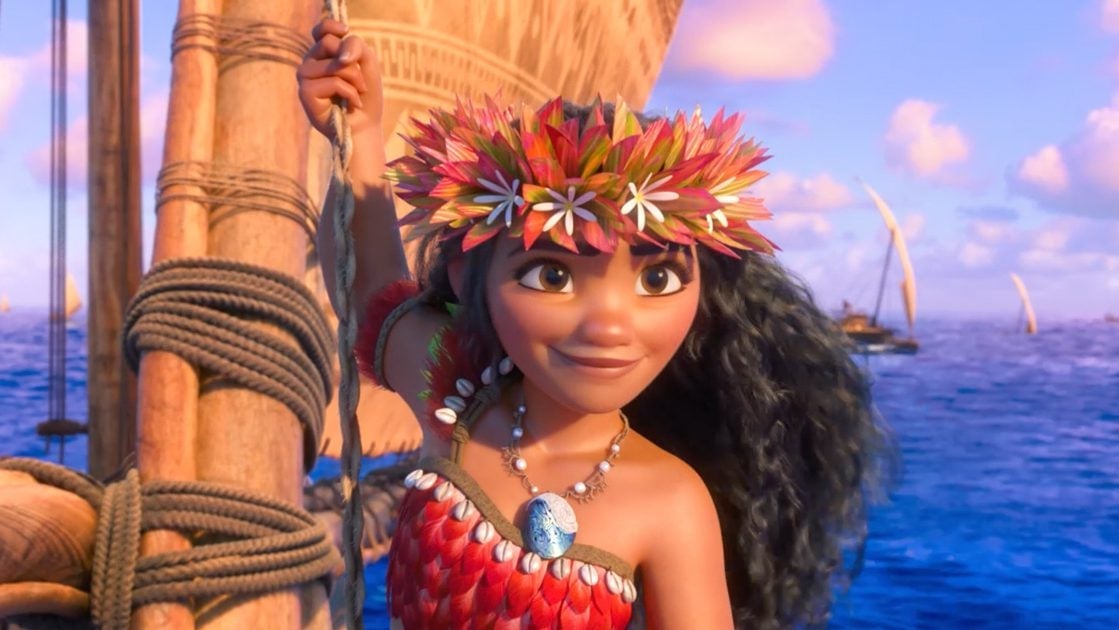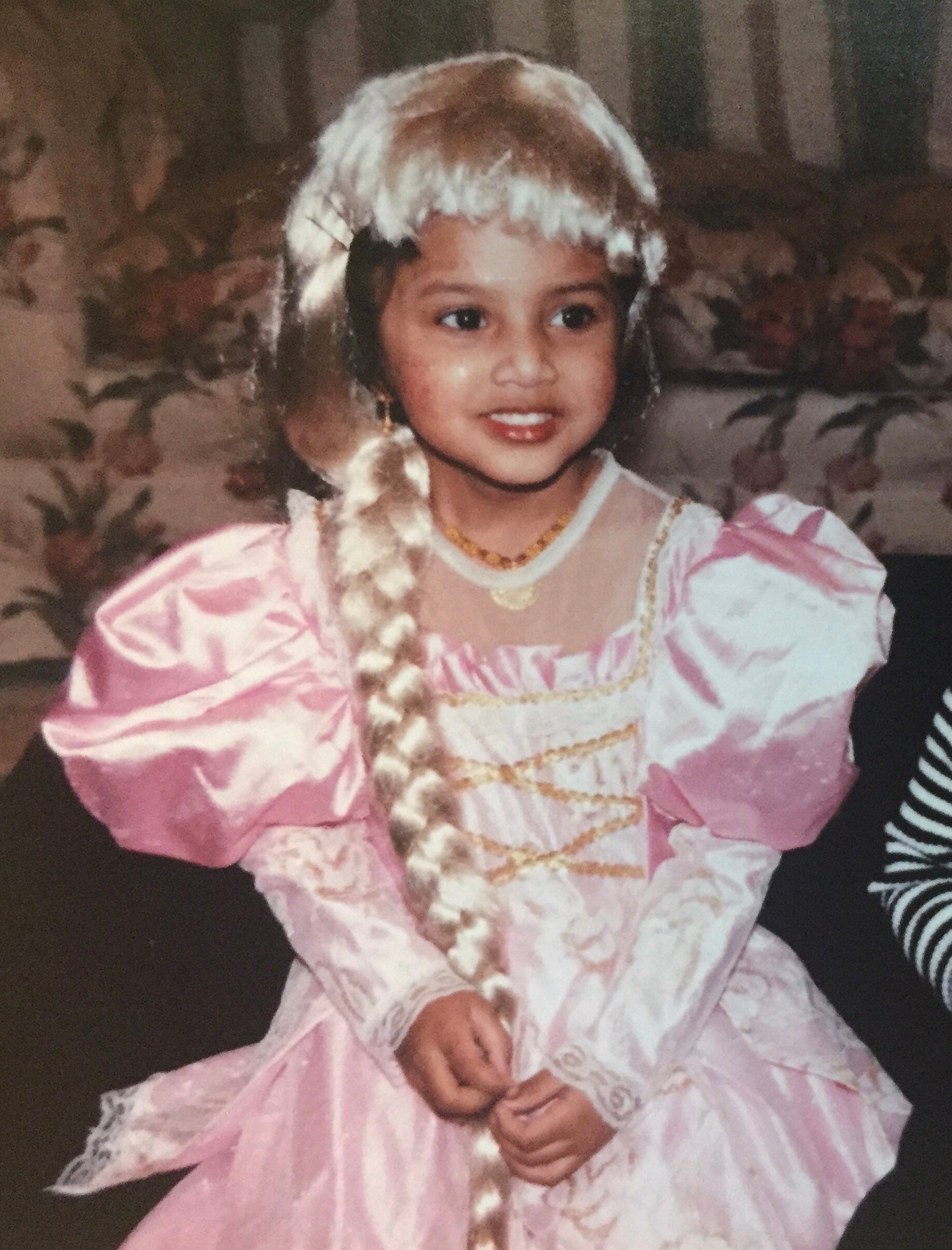Please don’t tell your kids they can’t dress as Moana this Halloween
Last year, Disney’s Moana told the story of a resourceful, brave, and quick-witted Polynesian princess from the fictional island of Motunui. The movie proved to be an instant hit, eventually grossing more than $643 million worldwide.


Last year, Disney’s Moana told the story of a resourceful, brave, and quick-witted Polynesian princess from the fictional island of Motunui. The movie proved to be an instant hit, eventually grossing more than $643 million worldwide.
Now, thousands of girls want to be her—and that’s causing quite a stir. In a widely shared essay published on the blog “Raising Race Conscious Children” in September, Sachi Feris, a white mom, shared how she was grappling with her daughter’s desire to be Moana on Halloween. At every turn, the decision seemed fraught: Let her be Elsa, and she reinforces notions of white privilege and beauty. But let her dress as Moana, and her daughter unwittingly tokenizes a whole culture. Her daughter ultimately chose to dress as Elsa this year, and Mickey Mouse the next.
The response to Feris’s dilemma was rapid fire. Redbook magazine’s editors penned a piece titled “Maybe don’t dress your kid up as Moana this Halloween,” arguing that doing so reinforced ”a deeply problematic power dynamic,” and that it was on parents to teach kids “not to be racially insensitive.” The National Review mocked this argument as “damned if you do, and damned if you don’t.” More conservative outlets, like The Blaze, used Feris’s article as fodder for flaming liberal snowflakes.
I’m sympathetic to this mother’s worries. Halloween feels doomed at every stage to be a flashpoint for the debate between sensitivity and free speech. Some schools have gone so far as to drop the name “Halloween” from their vocabularies, instead opting for a “black and orange” day parade, because they worry that allowing children to dress up as characters will inadvertently offend certain racial and ethnic groups.
What’s a parent to do? Redbook’s editors argue that the right course of action is to stay within your racial lane. “Moana is a really special character to young girls of Polynesian descent who have never seen a Disney Princess who looks like them, just like how Tiana from The Princess and the Frog likely resonated with young Black women who had waited decades to see themselves represented. White girls have plenty of princesses to choose from—there’s Belle, Ariel, Snow White, Sleeping Beauty … you get the idea.”
But that impulse is misplaced. Telling your white daughter to not dress as Moana is not only missing the point, it’s doing a disservice to the cause you’re most likely worried about—cultural and racial acceptance. Instead, it’s an opportunity to introduce your kid to cultural sensitivity, as Feris ultimately tries to do. Hopefully, it will help him or her learn how to thoughtfully respond to and empathize with other cultures—so you’re not raising kids who think it’s ok to throw costume parties featuring blackface and other racist stereotypes.
Kids should have black and brown heroes
Here’s a universal fact: Kids like to dress up as their heroes. They pick their idols, most often, from a place of earnest, wide-eyed, adoration. If the world is to grow more racially accepting, it’s likely more and more of these heroes won’t be white.
When your white child approaches you to dress as Moana, Tiana, or even real-life princess (of pop) Beyonce, she’s idolizing a woman of color—that’s great. It’s a win for slowly toppling white beauty standards and white women as sole emblems of success.
Disney’s Aladdin came out in 1992, the year before I was born, but it wasn’t until I was well into elementary school that the story, and its princess, started to gain traction among my clique of girlfriends.
I’m South Indian. While Princess Jasmine and I don’t come from the same culture, I was enthralled by her story. Disney’s telling has earned its fair share of controversy for misrepresenting the original Arabian tale, but seeing a brown princess on screen made me feel beautiful and empowered. Seeing my friends fight to be Jasmine instead of Belle from Beauty and the Beast made me feel validated.
Discouraging your children’s impulses, and insisting they stick to white alternatives, misdirects their initial feelings of adoration for a woman of color. Brad Meltzer, a children’s book author who has spent decades studying the concept of heroes, believes “heroes are really magic mirrors. Your heroes don’t just reflect you; they reveal you.” This makes your child’s impulse to worship Moana, a girl from a different race and culture, even more worth protecting.
Sure, there are other ways to celebrate idols besides dress-up, but that’s precisely what children do: They cut out cardboard boxes and pretend they’re the president, hop on their couches and steer their ships, or climb to the top of the stairs and belt “How Far I’ll Go.” The whole spirit of Halloween is that you can imagine yourself as anyone for a day. For a child, that prospect is especially meaningful.
If your child wants to dress up as Moana, it’s worth asking why. If it’s because being brown for a day sounds fun, pause, and get ready to talk. But if it’s because she’s adventurous, kind, and smart—go forth.
Are you dressing as a person or a race?
Talking about race with kids can be excruciating, but research shows it pays off. Children develop a sense of race early on, and can have subconscious associations with certain races by the time they enter primary school. When parents avoid the topic of race, children learn to think of it as taboo.
Your daughter’s Halloween costume is a small way to introduce race—and racial sensitivity—to her developing mind. By creating, researching, and putting together your daughter’s outfit with her, she can learn how the world sizes up other people who look different from her. You can teach her to see Moana as a person, not a racial caricature, while also modeling respect for her people.
Sociologist and diversity coach Debra Guckenheimer believes the most important thing is to not tell your children “you don’t see color.” Instead prod and figure out what, for starters, they think of race. Parenting expert Deborah Gilboa asks parents to really listen to their children’s answers, even if they are alarming, and rework their preconceived notions from there.
You can show your child that when she hits a complicated racial issue like dressing up as another race, the answer is most definitely not to find comfort in her own racial lane. There’s evidence that children automatically act differently towards kids of other races. Lean into your child’s instinctual choice, and figure out a way to encourage a respectful affinity to Moana or Tiana (or whomever she seeks to be).
Blackface or brownface will never be ok
If your child does decide to dress as a person of another color, it’s worth remembering the obvious stereotypes to avoid. Dressing as Moana isn’t racially insensitive—thinking you need to smear yourself in brown makeup or don a tinted skin “suit” in order to authentically represent her, is.
But wait—if this is about celebrating non-white beauty, isn’t it ok if my daughter wants to commit to that part of the look too? Not really. Making a costume that includes transforming skin color signals to your child that Moana’s skin is akin to the Hulk’s green hue, or a fun leopard print: alien and animal. It transitions her original feelings of admiration for a woman of color to believing she can package, put on, and take off, a race.
Disney might agree: it hastily withdrew a costume depicting Maui, a Polynesian demi-god in Moana, in response to uproar over its tinted sleeves.
Recognizing that skin color isn’t something most of the world can just shed has helped us shun one of the most racist costume choices of our time: blackface, a practice that dates back to the 1820s. This tradition’s “cultural residue is all around us,” says Blair L. M. Kelley, an associate professor of history at North Carolina State University, and it’s one we should actively talk about, she believes. “Until we actively remember the ugliness of this history, people will continue to blacken their faces without recognizing the horror hidden beneath the paint.”
Dress as the character, just the character
But dressing with racial sensitivity isn’t just about skin, which is partially why some well-intentioned parents get frustrated and give up. My advice: focus on elements of the costume that feel intimately linked to the character, like Moana’s necklace.
Emmaline Matagi, an indigenous Fijian, offers a thorough guide to how non-Polynesian girls can dress as Moana (and the answer isn’t “just don’t do it!”). She argues that the most important thing is you’re visibly dressed as just Moana or Maui, never a vague generalization of Polynesian culture. What this means is that the Disney, K-Mart, warehouse, or pre-packaged costumes of Moana are great (minus any skin sleeves or tattoos)—they clearly replicate the look of the animated Disney character. What’s not ok is donning any type of traditional Polynesian garb, trying to recreate Polynesian designs, or in any way, dressing less like Moana, and more like a Polynesian woman.
This may start to feel dicey, and that’s ok. Trust your gut—if you choose to create a costume from scratch with your child, notice when it feels like you’re treading into replicating ethnic designs, and stop. If you dress your daughter as Disney’s Jasmine, are you recreating the bright blue jumpsuit look—or are you putting her in a saree because Jasmine may be Indian?
Hair can get especially tough. The standard Moana outfit includes a long, flowing wig. Do your research—is Moana’s hair particular to the Polynesian people? Is the texture of the wig attempting to recreate a type of ethnic hair, or just mimic Moana’s? You might not always be sure you made the right call, but doing the research with your daughter, asking these questions out loud, and demonstrating to her how to decide whether something is ok will go far in making her a racially sensitive human.
Matagi reminds us this should be fun. “It’s a good idea to teach your children how to respect different cultures and explain to them that whilst it may only be a store-bought costume, it is important to be respectful and understanding of where the costume comes from. You could show them the Pacific on a map or look at some pictures online of traditional Polynesian attire. You could learn how to say hello in different Pacific languages together. Use it as an educational tool while also having fun with it.”
When I was five years old, I was intent on being the blond, long-haired Rapunzel for Halloween (This far predated the Disney version, Tangled, so my inspiration came from the classic fairytale books.) My dad visited a costume shop and perused the princess aisle until he spotted a stock package for Rapunzel. Though I was thrilled to be in a flowing, pink dress, I was hyper aware my hair—cropped, black—didn’t quite add up to the part.
I ask my dad now if pinning a long, blonde wig to the head of his Indian child made him uncomfortable. “Not in the least,” he tells me. “Her hair, well, is kind of the whole story. And you seemed more excited about the length, than the color, anyway.”
Even though Rapunzel was a blond, blue-eyed princess, it wasn’t her skin color I aspired to. I wanted to be a brave, resourceful princess for a day. The real spirit of Halloween was that I got to.
